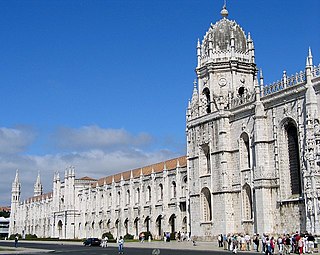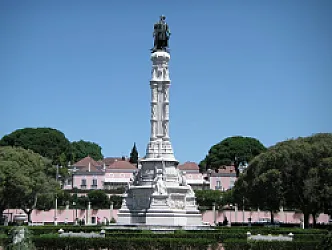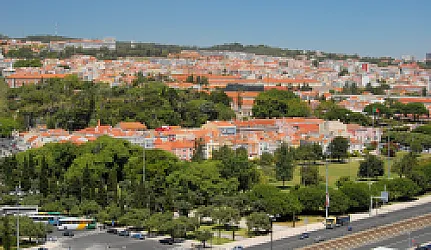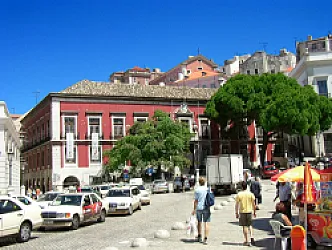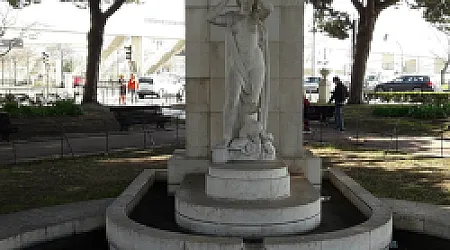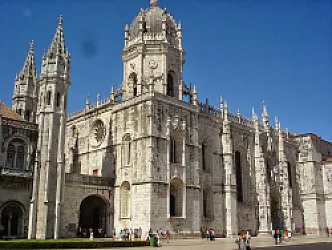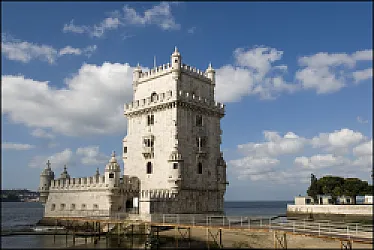Visitez Lisbonne en 2 jours
20 POIs incontournables, parcours optimisés et anecdotes.
Chargement de la carte...
Vous allez visiter les plus beaux points d'intérêt de Lisbonne
2 Days in Lisbon — A love letter to the City of Seven Hills
Lisbon stole my heart the moment I stepped off the tram. Light spills over tiled facades and the air tastes faintly of salt and baked custard. They call it the City of Seven Hills, and that breathless climb is part of its charm. Some say it's overrated, but they haven't lingered on a sunset riverbank here. I return again and again, and this short guide is born from those soft, sunlit returns.
Why visit? Lisbon is more than monuments. It's the clatter of trams, the rough warmth of azulejo tiles beneath your fingers, and the low, mournful pull of fado at night. Walks here feel cinematic. You will stand at the Monument of the Discoveries and imagine explorers launching into fog. You will lose time inside the cloistered magnificence of Jerónimos Monastery. You might linger at Palácio dos Condes de Almada and feel centuries whispering through its halls. This compact city delivers sudden viewpoints, sculptural surprises, and pastries that make you grin with guilty delight.
Planning can feel overwhelming. You could easily spend weeks wandering every alley and miradouro. With just two days, choices suddenly feel urgent. I get it — there are so many options and not enough time. That’s exactly why I created this Lisbon itinerary. Below, I’ll show you how to spend 2 days in Lisbon without missing the moments that matter. Expect viewpoints, palaces, monuments, and a few secret corners.
One practical truth before we begin: Lisbon’s rhythm is slow and generous. Crowds thin early and late. Narrow streets fill midday. If this is your first time in Lisbon, you’ll want to pick times carefully. This plan focuses on the best times to visit each spot so you can savor them, not rush.
Key tip: Start early and walk light. Comfortable shoes and an early start save time and sore feet, and give you quieter views at Monument Gago Coutinho and Sacadura Cabral and Figuras femininas. Why it matters: mornings hold the best light, and Lisbon rewards slow exploration. Now let's dive into the itinerary and discover what to see in Lisbon with two unforgettable days!

Quick Mini Guide to Lisbon
Where to stay:
- Belém — best for a concentrated walk: Jerónimos Monastery, Monument of the Discoveries and riverside monuments within 10–20 min.
- Chiado/Baixa — central base for The Alchemist LISBON, shops and evening dining; easy tram/taxi to Belém.
When to visit:
- Morning for Jerónimos and Monument of the Discoveries to beat queues and get soft light for photos.
- Avoid Mondays for monuments — check opening days; late afternoon on the river for sunset over the Tagus.
Things to do (2-day plan):
- Day 1 — Belém cluster: Jerónimos Monastery, Pastéis de Belém, Monument of the Discoveries, Monument Gago Coutinho & Sacadura Cabral, and the Figuras femininas sculptures; join “Secrets of Belem” for hidden stories.
- Day 2 — Central Lisbon: visit Palácio dos Condes de Almada (check visiting hours), try the immersive “The Alchemist LISBON” interactive tour, stroll viewpoints and riverside cafés.
Don't forget:
- Comfortable shoes for cobbled streets and a light jacket for windy river breezes.
- Buy timed tickets for Jerónimos and tour slots in advance; cash/card for Pastéis de Belém line.
- Plan one sunset at the river near the Monument of the Discoveries — iconic photo moment.
Jour 1 - Lisbonne
10 POIs à découvrirJour 1 - Matin à Lisbonne
5 Points d'intérêt - Durée : 3h15 - Distance : 13 km - Marche : 2h53
Monument aux découvertes
- Le monument représente la proue d'une caravelle avec sur les côtés 33 personnages importants de l'Âge des Découvertes portugais, tels que les navigateurs Nuno Gonçalves et Camões.
- À l'entrée, l'épée de la maison royale d'Avis est représentée, et à la proue se trouve une statue d'Henri le Navigateur, tenant une caravelle de la main droite et une carte de la main gauche.
- Devant le monument se trouve une rose des vents de 50 mètres de diamètre, avec un planisphère au centre, représentant les principales routes de l'expansion portugaise entre les 15e et 16e siècles.
- L'intérieur du monument abrite un centre culturel, avec un auditorium, des salles d'exposition et un belvédère au sommet, offrant une belle vue sur Belém et le Tage.
- Le monument original a été construit en 1940 pour l'Exposition universelle et a été démantelé 20 ans plus tard pour faire place à sa version actuelle en pierre rose, inaugurée en 1960.
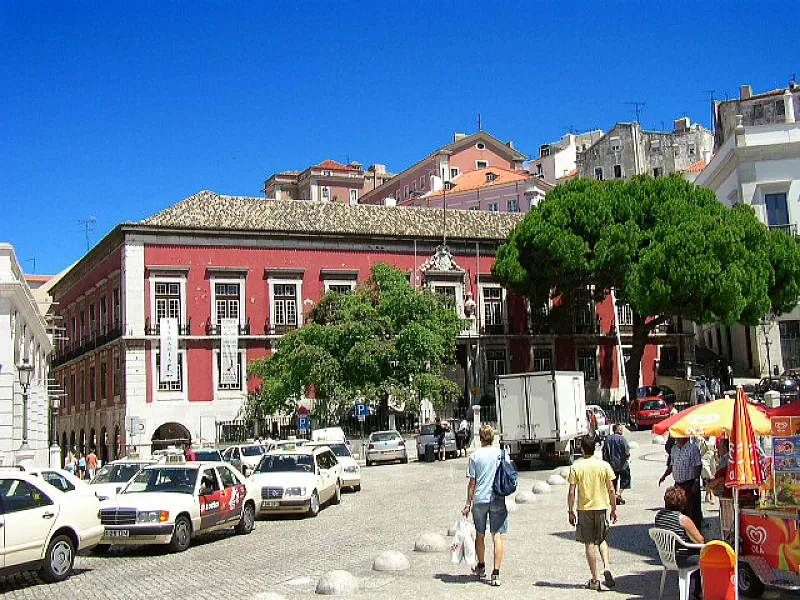
Palais Condes de Almada (Palácio dos Condes de Almada)
- Le palais de l'Indépendance de Lisbonne est un monument national, également connu sous le nom de palais Rossio et de palais São Domingos.
- Il a appartenu pendant des siècles aux familles Almada et Abranches. site de la réunion de la Restauration portugaise, qui a marqué l'indépendance du Portugal en 1640.
- Bien que situé dans le centre historique de Lisbonne, il conserve des éléments architecturaux arabes.
- Il abrite actuellement plusieurs centres culturels, dont le musée de la Restauration du Portugal.
Monastère des Hiéronymites
- Le monastère de Jerónimos est un monastère portugais emblématique appartenant à l'ordre de Saint Jérôme, représentant les vastes richesses amassées par l'exploration mondiale portugaise.
- Il a été construit en 1502 sur le site d'un ermitage fondé par Henri le Navigateur.
- Le monastère sert d'exemple remarquable du style architectural manuélin, mêlant des éléments gothiques aux influences de la Renaissance.
- Le monastère, qui a résisté au tremblement de terre dévastateur de Lisbonne en 1755, a été endommagé par les troupes anglaises qui y étaient stationnées pendant les guerres napoléoniennes.
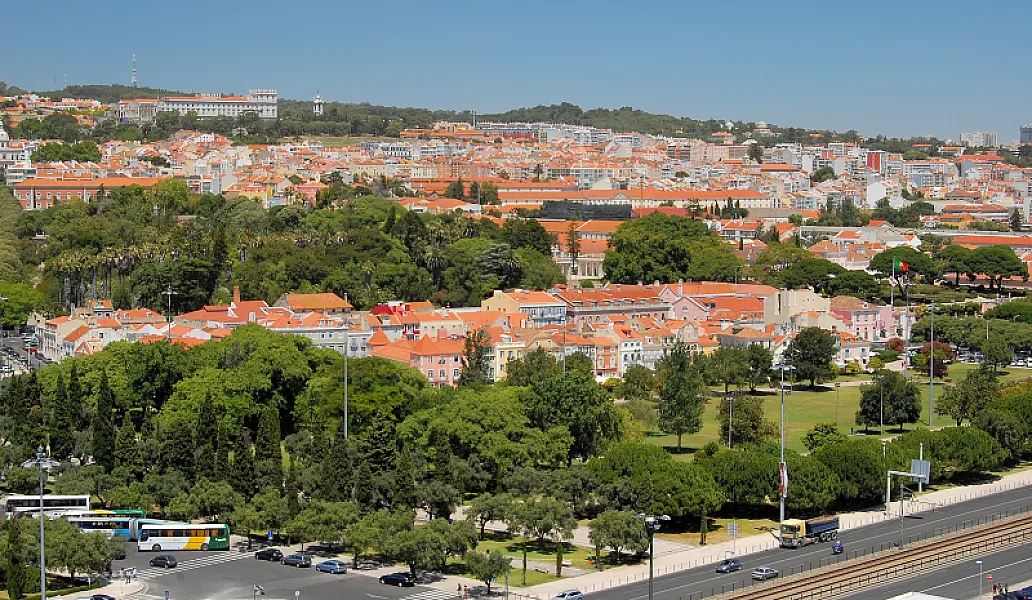
Jardin Vasco de Gama
- Le jardin, construit dans les années 1980, a été nommé d'après le célèbre navigateur portugais.
- Vasco da Gama était un noble et explorateur portugais qui fut le premier Européen à atteindre l'Inde par la mer.
- Son premier voyage de 1497-1499 a établi une route maritime directe de l'Europe à l'Asie, contournant la pointe sud de l'Afrique, évitant la nécessité de naviguer à travers la très contestée mer Méditerranée.
- Il a dirigé deux des Armadas portugaises des Indes, et ses voyages sont considérés comme des étapes importantes de l'exploration maritime portugaise, marquant le début d'une phase maritime du commerce mondial.
- Le pavillon thaïlandais a été offert au Portugal par la Thaïlande en reconnaissance des 500 ans de relations entre les deux pays.
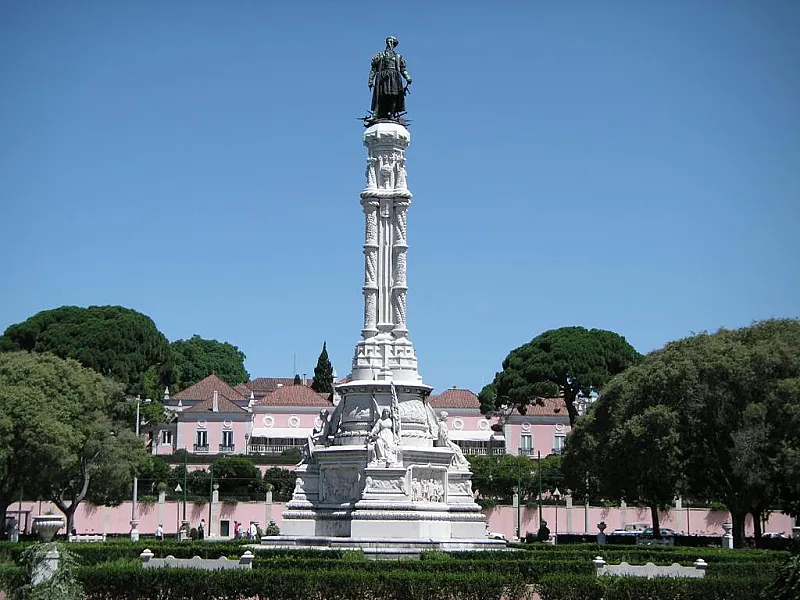
Place Afonso de Albuquerque
- La place est située en face du Palais national de Belém, un bâtiment du XVIIIe siècle qui est actuellement la résidence du président du Portugal.
- Elle porte le nom d'Afonso de Albuquerque, le deuxième gouverneur des Indes portugaises, et offre une vue parfaite sur le palais.
- Il présente un monument néo-manuelin des artistes Silva Pinto et Costa Mota tio, inauguré en 1902.
- Le monument comporte une statue en bronze d'Afonso de Albuquerque et des bas-reliefs décrivant sa vie.
Jour 1 - Après-midi à Lisbonne
5 Points d'intérêt - Durée : 3h45 - Distance : 2.9 km - Marche : 0h38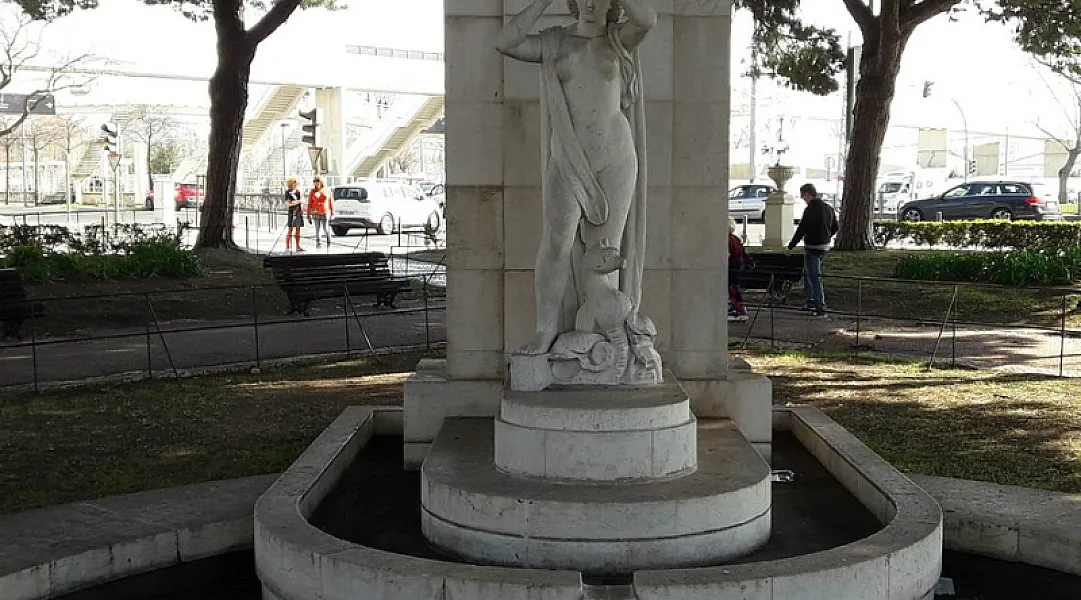
Figuras Femininas
- La femme au cerf représente Diane ou Artémis, sœur d'Apollon, chasseresse, qui fut surprise par Attéone alors qu'elle se baignait dans le fleuve et le transforma en cerf.
- La femme et l'hippocampe représente Amphitrite, épouse de Poséidon, dont le fils était Nérée.
- Elle est la personnification féminine de l'eau de mer qui entoure la Terre et a un cheval marin à ses pieds.
- La femme et la chèvre représente la petite Dionysia, une fête champêtre avec des libations de vin et le sacrifice d'une chèvre.
- La femme et la chèvre représente la petite Dionysia.

Monument Gago Coutinho et Sacadura Cabral
- The monument was created in honor of the First Aerial Crossing of the South Atlantic to Brazil in 1922.
- The monument features a stainless steel replica sculpture of a Fairey III biplane, the aircraft type used in the 1922 crossing.
- Inside the monument are life-sized busts of Gago Coutinho and Sacadura Cabral, who were involved in the historic flight.
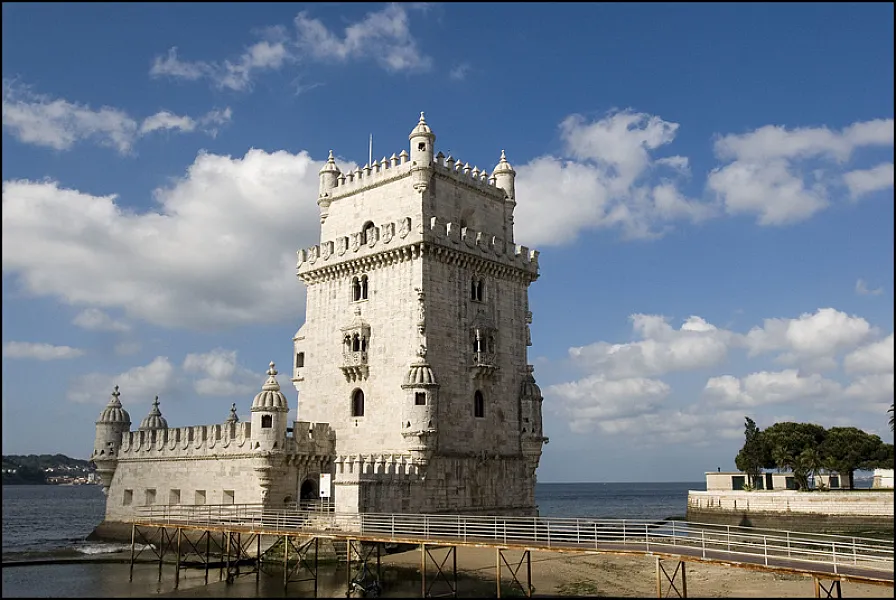
Tour de Belem
- Elle a été construite au XVIe siècle, à l'apogée de la Renaissance portugaise, dans le style manuélin portugais.
- Elle intègre également d'autres conceptions architecturales, comme des minarets inspirés de l'architecture mauresque.
- La fortification symbolisait la puissance maritime et coloniale du Portugal au début de l'Europe moderne, et servait à la fois de point d'embarquement et de débarquement pour les explorateurs portugais et de porte d'entrée cérémonielle.
- La Tour a été construite en calcaire de lioz et comprend un bastion et une tour de 30 mètres de haut et de quatre étages.
- On dit souvent à tort que la tour a été construite au milieu du Tage et qu'elle se trouve maintenant près de la rive en raison de la réorientation du fleuve après le tremblement de terre de Lisbonne de 1755.
- Mais, en réalité, la tour a été construite sur une petite île du Tage près du rivage.
- Outre sa fonction militaire, la tour de Belém célébrait également le retour des Portugais en Inde et servait en quelque sorte de porte d'accueil pour les flottes arrivant à l'embouchure du Tage.
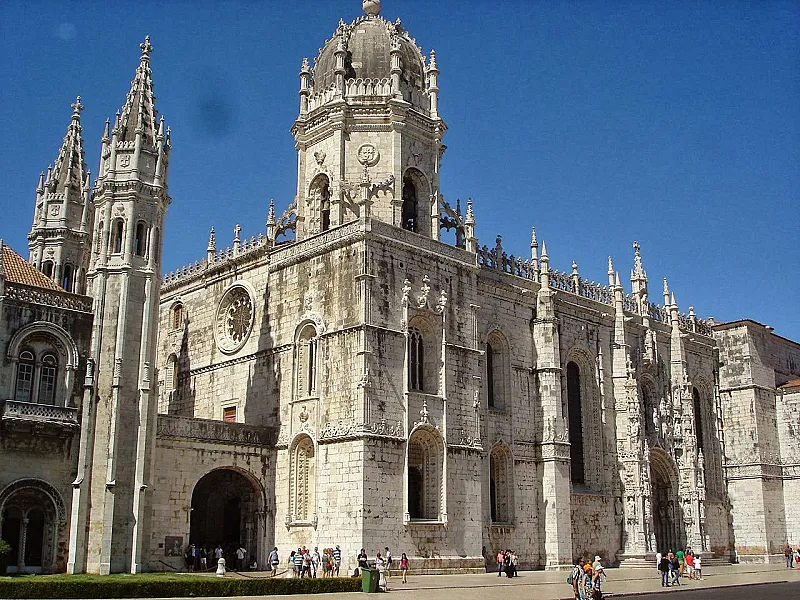
Eglise Sainte Marie de Belem
- L'église a un plan en croix latine, composé de trois nefs à la même hauteur, couvertes par une vaste voûte poly-nervée soutenue par six piliers.
- La voûte croisée couvre, sans supports intermédiaires, une largeur de 30 mètres, ce qui représente "la réalisation la plus complète de l'ambition de la fin du Moyen Âge de couvrir la plus grande portée possible avec le minimum de supports".
- Dans la chapelle à gauche du transept sont enterrés le Cardinal-Roi D.
- Henrique et ceux des fils de D.
- Manuel Ier ; dans celle de droite se trouve le tombeau de D.
- Sebastião et les descendants de D.
- L'église abrite également les tombes de Camões et de Vasco da Gama, de l'oncle Costa Mota.

Memorial Espaço entre a Palavra e a Cor
- Sophia de Mello Breyner Andresen est née en 1919.
- Le mémorial, nommé Espaço Entre a Palavra e a Cor, présente ses poèmes sur son extérieur.
- Le projet a été conçu par Galeria Ratton d'après un concept de l'artiste Menez (de son vrai nom Maria Inês da Silva Carmona), et souligne l'amitié entre la poétesse et le peintre.
- Le mémorial, nommé Espaço Entre a Palavra e a Cor, présente ses poèmes sur son extérieur.
Jour 2 - Lisbonne
10 POIs à découvrirJour 2 - Matin à Lisbonne
5 Points d'intérêt - Durée : 3h15 - Distance : 13 km - Marche : 2h53
Monument aux découvertes
- Le monument représente la proue d'une caravelle avec sur les côtés 33 personnages importants de l'Âge des Découvertes portugais, tels que les navigateurs Nuno Gonçalves et Camões.
- À l'entrée, l'épée de la maison royale d'Avis est représentée, et à la proue se trouve une statue d'Henri le Navigateur, tenant une caravelle de la main droite et une carte de la main gauche.
- Devant le monument se trouve une rose des vents de 50 mètres de diamètre, avec un planisphère au centre, représentant les principales routes de l'expansion portugaise entre les 15e et 16e siècles.
- L'intérieur du monument abrite un centre culturel, avec un auditorium, des salles d'exposition et un belvédère au sommet, offrant une belle vue sur Belém et le Tage.
- Le monument original a été construit en 1940 pour l'Exposition universelle et a été démantelé 20 ans plus tard pour faire place à sa version actuelle en pierre rose, inaugurée en 1960.

Palais Condes de Almada (Palácio dos Condes de Almada)
- Le palais de l'Indépendance de Lisbonne est un monument national, également connu sous le nom de palais Rossio et de palais São Domingos.
- Il a appartenu pendant des siècles aux familles Almada et Abranches. site de la réunion de la Restauration portugaise, qui a marqué l'indépendance du Portugal en 1640.
- Bien que situé dans le centre historique de Lisbonne, il conserve des éléments architecturaux arabes.
- Il abrite actuellement plusieurs centres culturels, dont le musée de la Restauration du Portugal.
Monastère des Hiéronymites
- Le monastère de Jerónimos est un monastère portugais emblématique appartenant à l'ordre de Saint Jérôme, représentant les vastes richesses amassées par l'exploration mondiale portugaise.
- Il a été construit en 1502 sur le site d'un ermitage fondé par Henri le Navigateur.
- Le monastère sert d'exemple remarquable du style architectural manuélin, mêlant des éléments gothiques aux influences de la Renaissance.
- Le monastère, qui a résisté au tremblement de terre dévastateur de Lisbonne en 1755, a été endommagé par les troupes anglaises qui y étaient stationnées pendant les guerres napoléoniennes.

Jardin Vasco de Gama
- Le jardin, construit dans les années 1980, a été nommé d'après le célèbre navigateur portugais.
- Vasco da Gama était un noble et explorateur portugais qui fut le premier Européen à atteindre l'Inde par la mer.
- Son premier voyage de 1497-1499 a établi une route maritime directe de l'Europe à l'Asie, contournant la pointe sud de l'Afrique, évitant la nécessité de naviguer à travers la très contestée mer Méditerranée.
- Il a dirigé deux des Armadas portugaises des Indes, et ses voyages sont considérés comme des étapes importantes de l'exploration maritime portugaise, marquant le début d'une phase maritime du commerce mondial.
- Le pavillon thaïlandais a été offert au Portugal par la Thaïlande en reconnaissance des 500 ans de relations entre les deux pays.

Place Afonso de Albuquerque
- La place est située en face du Palais national de Belém, un bâtiment du XVIIIe siècle qui est actuellement la résidence du président du Portugal.
- Elle porte le nom d'Afonso de Albuquerque, le deuxième gouverneur des Indes portugaises, et offre une vue parfaite sur le palais.
- Il présente un monument néo-manuelin des artistes Silva Pinto et Costa Mota tio, inauguré en 1902.
- Le monument comporte une statue en bronze d'Afonso de Albuquerque et des bas-reliefs décrivant sa vie.
Jour 2 - Après-midi à Lisbonne
5 Points d'intérêt - Durée : 3h45 - Distance : 2.9 km - Marche : 0h38
Figuras Femininas
- La femme au cerf représente Diane ou Artémis, sœur d'Apollon, chasseresse, qui fut surprise par Attéone alors qu'elle se baignait dans le fleuve et le transforma en cerf.
- La femme et l'hippocampe représente Amphitrite, épouse de Poséidon, dont le fils était Nérée.
- Elle est la personnification féminine de l'eau de mer qui entoure la Terre et a un cheval marin à ses pieds.
- La femme et la chèvre représente la petite Dionysia, une fête champêtre avec des libations de vin et le sacrifice d'une chèvre.
- La femme et la chèvre représente la petite Dionysia.

Monument Gago Coutinho et Sacadura Cabral
- The monument was created in honor of the First Aerial Crossing of the South Atlantic to Brazil in 1922.
- The monument features a stainless steel replica sculpture of a Fairey III biplane, the aircraft type used in the 1922 crossing.
- Inside the monument are life-sized busts of Gago Coutinho and Sacadura Cabral, who were involved in the historic flight.

Tour de Belem
- Elle a été construite au XVIe siècle, à l'apogée de la Renaissance portugaise, dans le style manuélin portugais.
- Elle intègre également d'autres conceptions architecturales, comme des minarets inspirés de l'architecture mauresque.
- La fortification symbolisait la puissance maritime et coloniale du Portugal au début de l'Europe moderne, et servait à la fois de point d'embarquement et de débarquement pour les explorateurs portugais et de porte d'entrée cérémonielle.
- La Tour a été construite en calcaire de lioz et comprend un bastion et une tour de 30 mètres de haut et de quatre étages.
- On dit souvent à tort que la tour a été construite au milieu du Tage et qu'elle se trouve maintenant près de la rive en raison de la réorientation du fleuve après le tremblement de terre de Lisbonne de 1755.
- Mais, en réalité, la tour a été construite sur une petite île du Tage près du rivage.
- Outre sa fonction militaire, la tour de Belém célébrait également le retour des Portugais en Inde et servait en quelque sorte de porte d'accueil pour les flottes arrivant à l'embouchure du Tage.

Eglise Sainte Marie de Belem
- L'église a un plan en croix latine, composé de trois nefs à la même hauteur, couvertes par une vaste voûte poly-nervée soutenue par six piliers.
- La voûte croisée couvre, sans supports intermédiaires, une largeur de 30 mètres, ce qui représente "la réalisation la plus complète de l'ambition de la fin du Moyen Âge de couvrir la plus grande portée possible avec le minimum de supports".
- Dans la chapelle à gauche du transept sont enterrés le Cardinal-Roi D.
- Henrique et ceux des fils de D.
- Manuel Ier ; dans celle de droite se trouve le tombeau de D.
- Sebastião et les descendants de D.
- L'église abrite également les tombes de Camões et de Vasco da Gama, de l'oncle Costa Mota.

Memorial Espaço entre a Palavra e a Cor
- Sophia de Mello Breyner Andresen est née en 1919.
- Le mémorial, nommé Espaço Entre a Palavra e a Cor, présente ses poèmes sur son extérieur.
- Le projet a été conçu par Galeria Ratton d'après un concept de l'artiste Menez (de son vrai nom Maria Inês da Silva Carmona), et souligne l'amitié entre la poétesse et le peintre.
- Le mémorial, nommé Espaço Entre a Palavra e a Cor, présente ses poèmes sur son extérieur.
Where to Stay in Lisbon
Location matters in Lisbon because the city is compact but famously hilly, and traffic or long uphill walks can eat into a two-day schedule. Choosing a base close to the Tagus or to a major transport hub saves time: you’ll want to be able to reach the Monument of the Discoveries and the Jerónimos Monastery quickly while still having easy access to the rest of the city for an evening stroll or a quick tram ride.
Lisbon is organised as a series of neighbourhoods radiating from the river and the downtown grid. The western riverside is where many of the big maritime monuments sit, while the central districts around the Baixa, Chiado and Cais do Sodré connect to trams, metro and trains that serve the hills. For a two-day visit, think in terms of riverfront clusters rather than individual streets: you’ll spend most of your time walking short distances or hopping on a single tram or train line.
If your priority is the riverfront monuments — the Monument of the Discoveries, the Jerónimos Monastery, the Figuras femininas and the Monument Gago Coutinho and Sacadura Cabral — base yourself in or near Belém for immediate access. For a central base that makes it easy to combine riverfront visits with historic quarters, consider staying around Chiado or Cais do Sodré, which put you a short tram or taxi ride from Belém and within easy evening walking distance of restaurants and viewpoints. If you prefer characterful lanes and fado atmospheres, Alfama keeps you close to downtown while offering a very different experience.
Transport-wise, use the yellow tram 15 or the frequent buses and the suburban train from Cais do Sodré to reach Belém quickly. Lisbon’s metro, trams and ferries are straightforward for short stays — buy a rechargeable card and plan a couple of journeys rather than trying to overbook every sight. Remember that taxis and rideshares fill in gaps late at night or when you’re carrying luggage.
For reassurance: focus on location rather than luxury when time is short. A small guesthouse or an apartment near a tram stop will give you more time on the monuments and less on transit. Check access (few old buildings have elevators), confirm arrival details, and pick a place with clear walking directions from the nearest tram or train stop — that little bit of planning keeps a busy two-day Lisbon trip relaxed and manageable.
Getting Around Lisbon
Lisbon’s public transport feels friendlier than it looks — the city leans into a compact network of trams, buses and a straightforward metro that stitches together hills and rivers. With a bit of curiosity you’ll find that the ornate yellow trams and the sleek metro are not just for photos but real, practical ways to move between neighborhoods. The system is run by a few main operators, and signage is clear; even if you don’t speak Portuguese, route numbers and station names make sense. I love how a short tram ride can turn a long walk into a scenic glide along the Tagus, and that feeling is contagious once you’ve taken your first trip. 🚇
One practical tip: pick up a Viva Viagem card as soon as you arrive. It’s a rechargeable smartcard (small fee for the card itself) that works on the Metro, buses and trams run by Carris, plus many commuter trains in the Lisbon area. You can load single fares, Zapping credit or day passes depending on how much you’ll use public transport. Keep your card handy because inspectors do check tickets, and tapping in/out is how you pay — no need to fumble for exact change on a historic tram. 🎫
Use Google Maps (or Citymapper) to plan routes in real time: it tells you which tram number to take, where to board and when to change to a metro line. If you’re headed to Belém, for example, it will often suggest the scenic Tram 15 or the Cascais train from Cais do Sodré, while rides across the old central neighborhoods usually show the faster metro plus a short walk. Google also shows live departures and platform information, which is a huge confidence-booster when stations have multiple exits on steep streets. 🗺️
To save money, compare single fares against day passes or the Lisboa Card if you plan museum visits and unlimited transport. Zapping on the Viva Viagem usually gives a reduced pay-as-you-go rate versus paper tickets, and a 24-hour pass can be worth it if you’ll hop on and off all day. Also remember that many scenic lifts, like the funiculars and Elevador de Santa Justa, take the same card or offer combined options that beat multiple taxi rides.
I remember one sunny morning when we wanted to go from the Monument of the Discoveries in Belém to the Palácio dos Condes de Almada in the city center. We took the no-fuss Tram 15 back toward Cais do Sodré, tapped our Viva Viagem, jumped off and walked a few minutes to the metro for one short stop into Baixa — the palace was an easy stroll from there. The whole trip felt seamless: scenic tram, quick metro, and a pleasant walk through squares where you suddenly felt like you belonged. That simple chain of tram + metro is my go-to whenever I show friends how accessible Lisbon really is.
What to Pack for Lisbon
Lisbon is a city made for wandering — steep hills, tiled facades, miradouros (viewpoints) and endless streets of azulejos. I’ve spent long days there (once walked about 15 miles over two days and was out for 10+ hours exploring Alfama, Baixa and Belém), so these are the practical things I always pack. Each item solved a real problem for me, so I’ll say why it matters, not just what to bring.
1. Comfortable walking shoes (required): I swear by a sturdy pair like Merrell Moab 2 or Salomon X Ultra — grippy soles for cobblestones and arch support for long climbs. On day one I climbed 200+ stone steps to a viewpoint; my friends in sneakers had sore feet by sunset. Lisbon’s streets are uneven and hilly, so the right shoes let you keep walking without pain.
2. Cross-body bag (anti-theft): I use a zipped, close-to-body cross-body bag and once had it jostled near Rossio — nothing taken because it was secure. Pickpockets can be a thing in crowded trams and tourist spots, so a bag you can see and keep in front is peace of mind while you take photos or sip a coffee.
3. Weather-appropriate clothing (layers + rain shell): Lisbon’s microclimate can flip—sunny mornings, cool breezes at viewpoints, and sudden drizzle. I pack a light merino tee, a thin fleece and a compact rain jacket. Layers meant I could enjoy a windy miradouro without freezing and still be comfortable inside cafés and churches.
4. Power adapter (Type C/F, 230V): Portugal uses the two-round-pin plugs (Type C/F) and 230V. I forgot mine once and paid hotel shop prices. Having a small travel adapter saved me from frantic searches when I needed to charge a camera battery before sunset photos at Miradouro da Senhora do Monte.
5. Power bank (10,000 mAh+): My phone hit 5% halfway through a 10+ hour day before I bought a 20€ tram ticket — not fun. A 10,000–20,000 mAh power bank will keep your phone and camera topped up for long photo sessions, navigation and ticket apps.
6. Optional extras — refillable water bottle & sunscreen / lightweight scarf: I refill a stainless steel bottle at cafés to save cash and stay hydrated on hot days; sunscreen and a hat are lifesavers in summer. A lightweight scarf is useful for chilly evenings or modesty when popping into churches.
Enjoy Your Trip to Lisbon!
In two lively days you’ll explore five highlights packed with Lisbon’s best: from the sweeping views at the Monument of the Discoveries to the elegance of Palace Condes de Almada (Palácio dos Condes de Almada) and the timeless beauty of Jerónimos Monastery. This itinerary gives you everything you need to taste history, architecture and scenic viewpoints while keeping the pace joyous and doable!
Remember, this is a GUIDE, not a strict schedule. Let yourself leave room for the unexpected: wander a side street, linger at a miradouro, or accept an invitation to a tiny café. The real magic often happens in those unplanned moments when you get delightfully lost. Don’t feel pressured to see EVERYTHING — savoring a few moments beats rushing through landmarks.
I hope you’ll embrace the lighthearted spirit of Lisbon and collect the small wonders that turn into unforgettable memories. I’m excited for you — you’re going to love the river views, the tiled facades and the gentle Lisbon pace!
Want to explore in a playful way? Check out Coddy’s gamified tours: Secrets of Belem (Lisbon) and The Alchemist LISBON. They add puzzles and stories to your walk, making discovery fun and interactive — a great option if you like games with your sightseeing!
Share your stories if you like, and ask me anything before you go. Safe travels! Enjoy!
Envie de plus d'aventure ?
Découvrez nos jeux d'évasion urbains pour transformer votre visite en aventure interactive !











